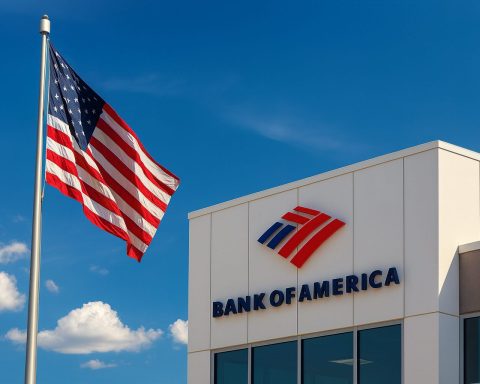The Dow Jones Industrial Average (Dow‑30) closed sharply lower on Thursday, November 20, 2025, after a dramatic intraday reversal that saw the blue‑chip index surrender a gain of more than 700 points and finish in the red. The Dow ended near 45,752, down roughly 386 points (about 0.8%), while the S&P 500 fell about 1.5% and the tech‑heavy Nasdaq slid more than 2%. [1]
Earlier in the session all three major U.S. indexes were up more than 1.5%, making today one of the largest intraday reversals since April as optimism around Nvidia’s blockbuster earnings gave way to renewed anxiety over artificial‑intelligence valuations and a confusing U.S. jobs report. [2]
How the Dow‑30 Finished Today
By the closing bell:
- Dow Jones Industrial Average (Dow‑30): ~45,752, ‑0.84% (≈‑386 points) [3]
- S&P 500: ~6,539, down about 1.5–1.6% [4]
- Nasdaq Composite: ~22,078, down about 2.2% [5]
- CBOE Volatility Index (VIX): around 26.4, up more than 11% on the day, reflecting a jump in fear and demand for downside protection. [6]
According to Dow‑30 component data, only 8 of the 30 stocks in the index finished higher, while 22 closed lower, consistent with the roughly 0.8% drop in the overall index. [7]
From Nvidia‑Fueled Euphoria to AI Hangover
Morning: Futures jump on Nvidia and jobs surprise
Before the opening bell, futures tied to the Nasdaq, S&P 500 and Dow pushed higher after Nvidia posted another blockbuster quarter. The chipmaker beat Wall Street’s revenue expectations, issued stronger‑than‑expected guidance and highlighted surging demand for its Blackwell AI platform, which CEO Jensen Huang described as “off the charts.” [8]
At the same time, the long‑delayed September U.S. jobs report finally hit the tape. The economy added 119,000 jobs, more than double economists’ expectations of 50,000, after August was revised to a loss of 4,000 jobs. The unemployment rate, however, ticked up to 4.4%. [9]
The mixed data—stronger headline job growth but higher unemployment—initially helped risk assets. Index futures rallied, and shortly after the open:
- The Dow was up more than 700 points at its intraday peak.
- The Nasdaq surged as much as 2.6%. [10]
Bond markets reacted with a modest rally, as the benchmark 10‑year Treasury yield slipped towards 4.10%, reinforcing hopes that the Federal Reserve could still consider a rate cut in December even with the stronger jobs headline. [11]
Afternoon: Nvidia reverses, AI doubts resurface
The story changed dramatically after midday. Nvidia, which had been up around 5–6% earlier, reversed to trade in the red and ended the regular session down roughly 3%, dragging high‑beta tech and chip names with it. [12]
Key dynamics behind the reversal:
- AI valuation fears: Multiple outlets highlighted growing concern that AI‑linked names had run too far, too fast, despite stellar fundamentals. [13]
- Rate‑cut uncertainty: While the jobs data showed more hiring, it also painted a picture of a still‑soft labor market. That left Fed watchers split on whether a December rate cut is likely, with odds hovering around one‑third based on futures pricing. [14]
- Positioning and profit‑taking: After a strong run in megacap tech and AI names this year, investors appeared quick to lock in gains once the morning surge began to fade, contributing to a “buyer strike” into the close, as noted in several market commentaries. [15]
By late afternoon:
- Both the Dow and Nasdaq had swung more than 1,000 points from their highs to their lows. [16]
- The VIX spiked above 26, marking one of its larger single‑day moves in recent weeks. [17]
- MarketWatch and other outlets described the session as the biggest “blown lead” for U.S. stocks since April, underscoring how violent the intraday reversal was. [18]
Macro Backdrop: A Confusing but Crucial Jobs Report
Beyond Nvidia, Thursday’s September employment report was the other major driver of market sentiment.
Key numbers:
- Nonfarm payrolls: +119,000 vs. ~50,000 expected; August revised to –4,000. [19]
- Unemployment rate: up to 4.4% from 4.3%. [20]
- Wages: Average hourly earnings grew about 0.2% month‑on‑month and 3.8% year‑on‑year, roughly in line with or slightly below forecasts. [21]
The report was delayed by a 43‑day U.S. government shutdown, forcing September and October data to be handled in an unusual way and amplifying uncertainty for policymakers and investors alike. [22]
In response:
- 10‑year Treasury yield: slipped to roughly 4.1%.
- 2‑year yield: eased towards 3.56–3.58%, reflecting slightly higher odds of a Fed cut but no consensus. [23]
Strategists quoted across major outlets stressed that the data “gives both hawks and doves something to confirm what they already believed,” leaving the Fed’s December decision finely balanced and keeping volatility elevated. [24]
Inside the Dow‑30: Walmart Soars, Tech and Cyclicals Sink
A look under the hood of the Dow‑30 shows a classic risk‑off rotation: defensive names outperformed while tech and economically sensitive stocks bore the brunt of the selloff. [25]
Big Dow‑30 winners
According to the official Dow‑30 closing list, 8 components finished higher, led decisively by Walmart. [26]
Top gainers:
- Walmart (WMT) – closed around $107.11, up 6.46%.
- The retailer delivered better‑than‑expected quarterly earnings, raised its full‑year outlook for the second time this year, and announced plans to shift its stock listing from the NYSE to Nasdaq in December. [27]
- Travelers (TRV) – roughly +0.83%, benefiting from the defensive appeal of insurance during risk‑off sessions. [28]
- Procter & Gamble (PG) – about +0.82%, as consumer‑staples exposure remained in favor. [29]
- UnitedHealth (UNH) – around +0.79%, extending healthcare’s role as a “steady‑eddy” haven in a softening economy. [30]
- McDonald’s (MCD), IBM (IBM), Johnson & Johnson (JNJ) and Coca‑Cola (KO) also finished modestly higher, reflecting investor preference for defensive earnings, cash flow stability and dividends. [31]
Reuters noted that consumer staples were the only S&P 500 sector to close in positive territory, a pattern echoed inside the Dow‑30 basket. [32]
Big Dow‑30 laggards
On the downside, the pain clustered in tech, communications and cyclical names:
- Cisco (CSCO) – down about 3.8%, one of the worst percentage performers in the index. [33]
- Boeing (BA) – off roughly 3.4%, adding pressure from the industrial side of the Dow’s price‑weighted structure. [34]
- Nvidia (NVDA) – down roughly 3%, despite blowout earnings and guidance, as AI enthusiasm collided with valuation worries. [35]
- Amazon (AMZN) – around ‑2.5%, pressured alongside other megacap growth names. [36]
- Nike (NKE) and Disney (DIS) – off about 1.9% and 1.9%, respectively, reflecting worries about consumer spending and discretionary demand. [37]
- Microsoft (MSFT) – down roughly 1.8%, significant given its high absolute share price and influence in a price‑weighted index like the Dow. [38]
Financial heavyweights Goldman Sachs (GS) and JPMorgan (JPM) also closed lower (around ‑1.6%), joining industrial bellwethers like Caterpillar (CAT) and diversified manufacturers such as 3M (MMM) in the red. [39]
Because the Dow is price‑weighted—higher‑priced shares move the index more than lower‑priced ones—declines in expensive components like Boeing, Caterpillar, Goldman and Microsoft punched above their weight in dragging the average lower. [40]
After the Bell: Volatility Persists
Even after the closing bell, volatility around the AI trade remained elevated:
- Nvidia shares were reported trading sharply higher in after‑hours action—up roughly 8% from the regular‑session close at one venue—suggesting that investors are still aggressively trading around headlines and short‑term positioning rather than fundamentally abandoning the AI theme. [41]
Overnight moves will set the tone for Friday’s open, but today’s whipsaw underscores how sensitive the Dow‑30 and broader market remain to:
- AI and megacap tech sentiment
- Every incremental datapoint on the labor market and Fed policy path
- Shifts between growth, cyclicals and defensive sectors
What Today’s Dow‑30 Reversal Means for Investors
1. The AI trade is powerful—but fragile
Nvidia’s earnings once again validated robust demand for AI infrastructure, but today proved that positioning and valuation can dominate even spectacular fundamentals on a given day. A single megacap’s reversal was enough to flip a 700‑point Dow rally into a loss. [42]
For Dow‑30 investors, this matters because the index now includes AI‑linked exposure both directly (Nvidia, Microsoft) and indirectly (cloud, chips, industrial automation). Swings in these names can increasingly dictate the index’s short‑term direction.
2. Defensive rotation is back in focus
Walmart, Procter & Gamble, Coca‑Cola, UnitedHealth, Travelers and McDonald’s—classic defensive or cash‑generative names—led today’s winners list, while higher‑beta tech and consumer discretionary names lagged. [43]
That rotation aligns with:
- A mixed but softening labor backdrop
- Moderately lower yields
- Elevated volatility and lingering macro uncertainty
For long‑term Dow investors, today’s tape suggests that barbell strategies—balancing growth exposure with high‑quality defensives—remain relevant as markets navigate the late‑cycle phase.
3. The Fed and data dependency will keep swings large
With the jobs report offering no clear signal on the timing of the next Fed move, and futures pricing only modest odds of a December rate cut, each incoming data point—on inflation, employment, or growth—is likely to trigger outsized index moves. [44]
For the Dow‑30, which is concentrated in large, mature businesses, that means more sessions like today are possible even without major new shocks: macro headlines plus AI sentiment are enough.
Practical Takeaways for Dow‑30 Watchers
- Expect choppier trading: A single session can now contain a full mini‑cycle—from “AI boom” to “AI bust” and back—within a matter of hours.
- Watch the heavyweights: High‑priced names (Nvidia, Microsoft, Goldman, Caterpillar, UnitedHealth, Boeing) will continue to dominate index moves due to the Dow’s price‑weighted design. [45]
- Don’t ignore defensives: Today’s outperformance in staples and healthcare shows that these names can cushion portfolios when growth and AI trades wobble. [46]
Nothing in today’s action changes the longer‑term role of the Dow‑30 as a barometer of U.S. blue‑chip sentiment—but it does underline that headline‑driven volatility is here to stay, particularly around AI, jobs data and the Federal Reserve.
References
1. www.google.com, 2. www.marketwatch.com, 3. www.google.com, 4. www.google.com, 5. www.google.com, 6. www.google.com, 7. www.dow-jones-djia.com, 8. www.reuters.com, 9. www.reuters.com, 10. www.tradingview.com, 11. www.businessinsider.com, 12. www.investopedia.com, 13. www.tradingview.com, 14. www.reuters.com, 15. www.investopedia.com, 16. www.tradingview.com, 17. www.google.com, 18. www.marketwatch.com, 19. www.reuters.com, 20. www.reuters.com, 21. finviz.com, 22. www.reuters.com, 23. www.reuters.com, 24. www.reuters.com, 25. www.tradingview.com, 26. www.dow-jones-djia.com, 27. www.investopedia.com, 28. www.dow-jones-djia.com, 29. www.dow-jones-djia.com, 30. www.dow-jones-djia.com, 31. www.dow-jones-djia.com, 32. www.tradingview.com, 33. www.dow-jones-djia.com, 34. www.dow-jones-djia.com, 35. www.dow-jones-djia.com, 36. www.dow-jones-djia.com, 37. www.dow-jones-djia.com, 38. www.dow-jones-djia.com, 39. www.dow-jones-djia.com, 40. www.spglobal.com, 41. public.com, 42. www.investopedia.com, 43. www.dow-jones-djia.com, 44. www.reuters.com, 45. www.spglobal.com, 46. www.dow-jones-djia.com







